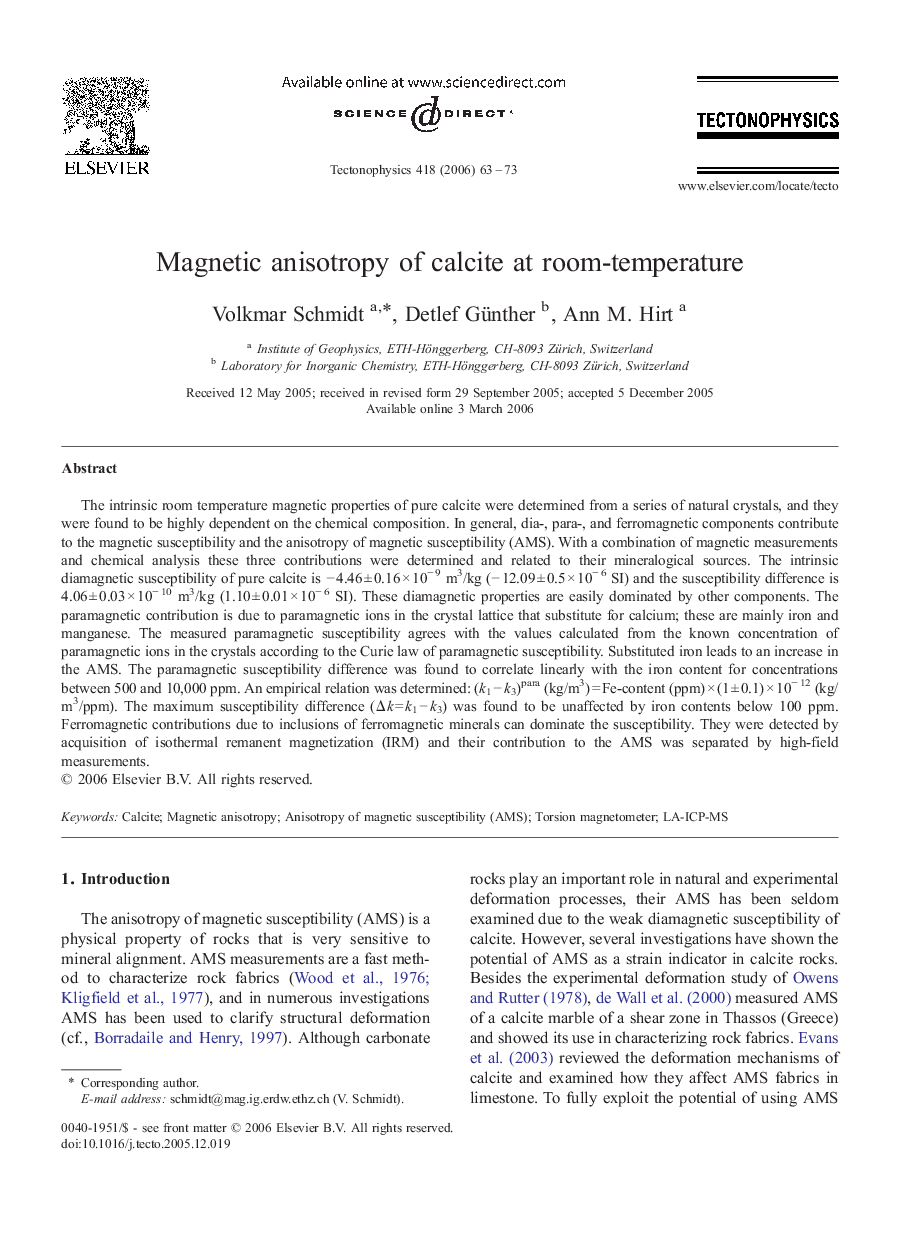| Article ID | Journal | Published Year | Pages | File Type |
|---|---|---|---|---|
| 4695187 | Tectonophysics | 2006 | 11 Pages |
Abstract
The intrinsic room temperature magnetic properties of pure calcite were determined from a series of natural crystals, and they were found to be highly dependent on the chemical composition. In general, dia-, para-, and ferromagnetic components contribute to the magnetic susceptibility and the anisotropy of magnetic susceptibility (AMS). With a combination of magnetic measurements and chemical analysis these three contributions were determined and related to their mineralogical sources. The intrinsic diamagnetic susceptibility of pure calcite is â 4.46 ± 0.16 Ã 10â 9 m3/kg (â 12.09 ± 0.5 Ã 10â 6 SI) and the susceptibility difference is 4.06 ± 0.03 Ã 10â 10 m3/kg (1.10 ± 0.01 Ã 10â 6 SI). These diamagnetic properties are easily dominated by other components. The paramagnetic contribution is due to paramagnetic ions in the crystal lattice that substitute for calcium; these are mainly iron and manganese. The measured paramagnetic susceptibility agrees with the values calculated from the known concentration of paramagnetic ions in the crystals according to the Curie law of paramagnetic susceptibility. Substituted iron leads to an increase in the AMS. The paramagnetic susceptibility difference was found to correlate linearly with the iron content for concentrations between 500 and 10,000 ppm. An empirical relation was determined: (k1 â k3)para (kg/m3) = Fe-content (ppm) Ã (1 ± 0.1) Ã 10â 12 (kg/m3/ppm). The maximum susceptibility difference (Îk = k1 â k3) was found to be unaffected by iron contents below 100 ppm. Ferromagnetic contributions due to inclusions of ferromagnetic minerals can dominate the susceptibility. They were detected by acquisition of isothermal remanent magnetization (IRM) and their contribution to the AMS was separated by high-field measurements.
Related Topics
Physical Sciences and Engineering
Earth and Planetary Sciences
Earth-Surface Processes
Authors
Volkmar Schmidt, Detlef Günther, Ann M. Hirt,
